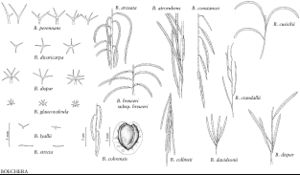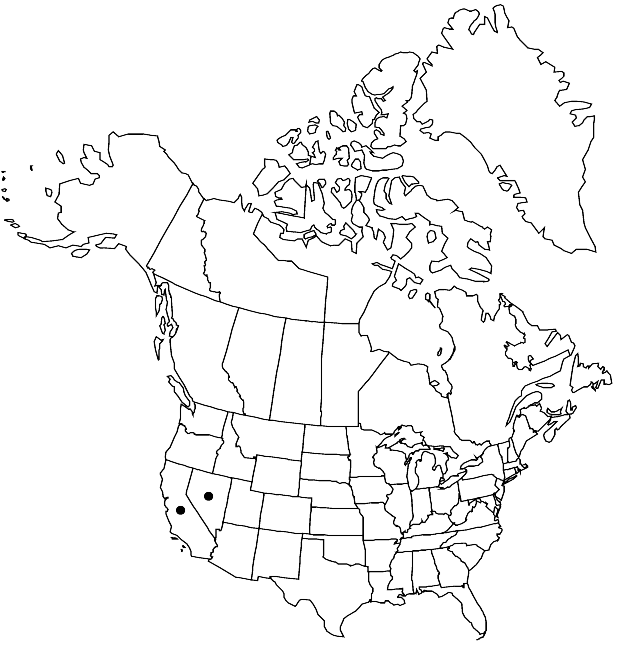Boechera dispar
Novon 13: 384. 2003.
Perennials; usually long-lived; sexual; caudex often woody. Stems usually 1 per caudex branch, arising from center of rosette near ground surface, 0.9–3 dm, densely pubescent proximally, trichomes short-stalked, 5–12-rayed, 0.1–0.3 mm, sparsely pubescent to glabrescent distally. Basal leaves: blade linear-oblanceolate, 2–5 mm wide, margins entire, not ciliate, surfaces densely pubescent, trichomes short-stalked, 5–12 (–16) -rayed, 0.1–0.3 mm. Cauline leaves: 1–5, not concealing stem; blade without auricles, surfaces of distalmost leaves pubescent. Racemes 4–15 (–20) -flowered, unbranched. Fruiting pedicels ascending, straight, 4–15 (–25) mm, pubescent, trichomes appressed, branched. Flowers ascending at anthesis; sepals pubescent; petals purple to lavender, 3.5–6 × 1–1.5 mm, glabrous; pollen ellipsoid. Fruits divaricate-ascending, not appressed to rachis, not secund, straight, edges parallel, 4–7.3 cm × 2.7–4 mm; valves glabrous; ovules 44–52 per ovary; style 0.05–0.1 mm. Seeds uniseriate, 1.9–2.3 mm in diam.; wing continuous, 0.3–0.5 mm wide.
Phenology: Flowering Apr–May.
Habitat: Rocky slopes and gravelly soil in desert scrub and pinyon-juniper communities
Elevation: 1500-2300 m
Discussion
Boechera dispar is a distinctive sexual diploid that is known from Inyo, Mono, and San Bernardino counties, California, and Nye County, Nevada.
Selected References
None.
Lower Taxa
"elongated" is not a number."thick" is not a number."dm" is not declared as a valid unit of measurement for this property.

